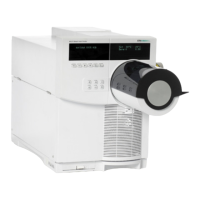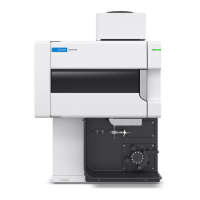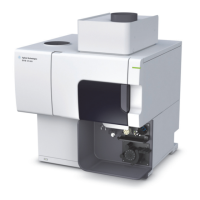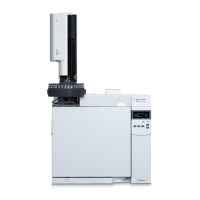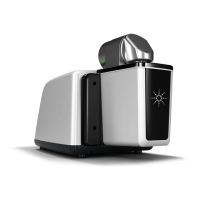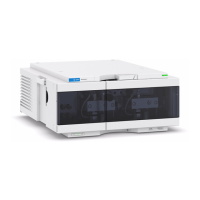184 5975 Series MSD Operation Manual for MassHunter
A Chemical Ionization Theory
intense [M+NH
4
]
+
ion observed at M+18 m/z, either through condensation or
association. If this resulting ion is unstable, subsequent fragmentation may be
observed. The neutral loss of H
2
O or NH
3
, observed as a subsequent loss of 18
or 17 m/z, respectively, is also common.
Charge exchange
Charge-exchange ionization can be described by the reaction:
X
+
· + M M
+
· + X
where X
+
is the ionized reagent gas and M is the analyte of interest. Examples
of reagent gases used for charge exchange ionization include the noble gases
(helium, neon, argon, krypton, xenon, and radon), nitrogen, carbon dioxide,
carbon monoxide, hydrogen, and other gases that do not react “chemically”
with the analyte. Each of these reagent gases, once ionized, has a
recombination energy expressed as:
X
+
· + e
–
X
or simply the recombination of the ionized reagent with an electron to form a
neutral species. If this energy is greater than the energy required to remove an
electron from the analyte, then the first reaction above is exothermic and
thermodynamically allowed.
Charge-exchange chemical ionization is not widely used for general analytical
applications. It can, however, be used in some cases when other chemical
ionization processes are not thermodynamically favored.
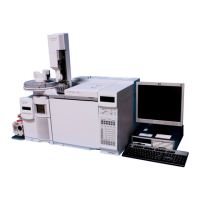
